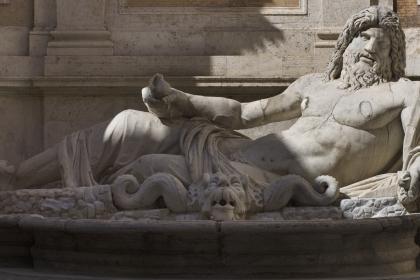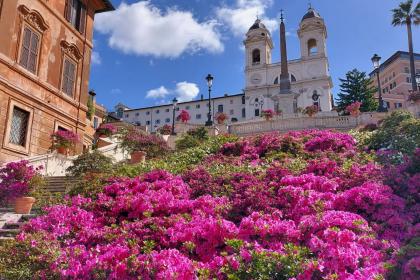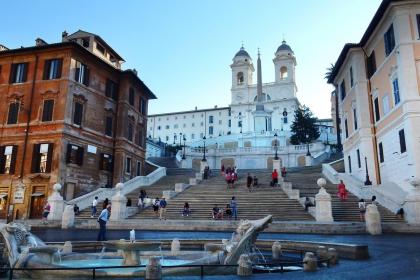
A landmark for the Catholic communities following the Byzantine rite, the simple and elegant church overlooking Via del Babuino began its history at the end of the 16th century. In 1573, Pope Gregory XIII founded the Congregation of the Greeks which, in turn, proposed to establish a College to provide an education or seminary training for any young man of the Byzantine rite reconciled to the Catholic church. The pope thus provided for the purchase of an entire block along the street that could accommodate also a church for the alumni of the College, mostly attended by Italian-Albanians, Melkites and Greeks and, more recently, Ukrainians, Hungarians, Bulgarians, Belarusians, Romanians, Slovaks.
The first stone was laid in 1580. The construction was entrusted to Giacomo Della Porta and the building was already finished in 1583, when the pope himself celebrated the first mass. The church was dedicated to St Athanasius (bishop and saint of Alexandria in Egypt) and was originally officiated with both the Byzantine and Latin rites: the double rite was renounced only in 1872, when it was decided to definitively entrust the church to the Congregation for the Oriental Churches. On that year, architect Andrea Busiri Vici oversaw a complete restoration of the interior of the church: the original 16th-century wooden iconostasis was replaced by a brick and stucco one while the lower part of the apse was covered in white and gray marble.
The façade, completed by Martino Longhi the Elder and preceded by a short staircase, is framed by two twin bell towers (similar to those of the Trinità dei Monti Church) crowned by an ogee cupola. The left hand campanile has a very interesting church clock (donated by Pope Clement XIV in 1771 ), which does not face the street but the College. In the second storey of the façade, two inscriptions in Greek and Latin recall the erection of the church. Over Via dei Greci, which runs along the left side of the church, an elevated corridor leads to the College’s palace: built in 1623, it was completely rebuilt in its present form in 1770.
The interior of the church has a nave with a chapel on each side. The plan is based on a rectangle with three external apses, clearly of Byzantine derivation: as a result, the church is one of the rare Roman architectural examples of direct oriental inspiration. Francesco Trabaldese was responsible for the original artworks, including the first wooden iconostasis and the frescoes in the side chapels. By Cavalier d’Arpino are the frescoes in the right and left apses showing the Assumption of Our Lady and the Crucifixion. As is customary in oriental liturgies, the iconostasis separates the main altar from the nave.
The liturgy is celebrated in Greek and occasionally in Albanian, Romanian, Hungarian or Arabic. To the left of the church are the statue of the so-called Babuino (which gives the street its name) and the ancient atelier where sculptor Antonio Canova worked.
The Talking Statues

Piazza di Spagna

 Condividi
Condividi
The Church of the Santissima Trinità dei Monti

 Condividi
Condividi
Piazza del Popolo

 Condividi
Condividi
Information
For the timetable of the masses and the visiting conditions, please contact the Pontifical Greek College of St Athanasius.
 Condividi
Condividi
Location
To find out about all accessibility services, visit the Rome accessible section.











































